This article was co-authored by Adarsh Vijay Mudgil, MD. Dr. Adarsh Vijay Mudgil is a board certified Dermatologist, Dermatopathologist, and the Owner of Mudgil Dermatology, a state-of-the-art dermatology practice based in New York, New York. As one of the few dermatologists in the area to achieve board certification in both dermatology and dermatopathology, Dr. Mudgil specializes in all aspects of medical, surgical, and cosmetic dermatology. He received his Bachelor's degree with Phi Beta Kappa honors from Emory University and earned his Doctor of Medicine (MD) with Alpha Omega Alpha honors from the Stony Brook University School of Medicine. In medical school, Dr. Mudgil was among a handful of students nationwide to receive a coveted Howard Hughes Medical Institute Fellowship and Scholarship. He then completed his residency in dermatology at the Mount Sinai Medical Center in Manhattan, where he served as chief resident. Additionally, Dr. Mudgil went on to complete a fellowship at the prestigious Ackerman Academy of Dermatopathology. He is a fellow of the American Academy of Dermatology, the American Society for Dermatologic Surgery, and the American Society of Dermatopathology. Dr. Mudgil is also a member of the Mount Sinai School of Medicine teaching faculty.
There are 24 references cited in this article, which can be found at the bottom of the page.
wikiHow marks an article as reader-approved once it receives enough positive feedback. This article received 50 testimonials and 88% of readers who voted found it helpful, earning it our reader-approved status.
This article has been viewed 7,994,788 times.
Although everyone should embrace their natural skin tone, if you've noticed your skin darkening due to time in the sun or age spots, you may want to lighten it. No matter what color skin you have, it will look its best when it’s clean and moisturized. However, if you would still like to brighten your skin a little, there a few natural remedies you can try at home.
Steps
Updating Your Skin Care Routine
-
1Exfoliate your skin 1-2 times a week. Exfoliating means gently scrubbing your skin to remove dead skin cells.[1] You can do this with a dry exfoliating brush, a damp washcloth, or a salt or sugar body scrub.[2]
- Since the skin on your face is very delicate, only use exfoliating tools and products specifically designed for use on the face. Body exfoliating products will typically be too harsh.[3]
- Keep in mind that exfoliation only helps if your current skin is darker than your normal skin tone, because it reveals fresh skin that is untouched by the sun.
- To make your own facial scrub, try adding a teaspoon of ground almonds or oatmeal to your regular cleanser.
-
2Apply a moisturizer to your skin morning and night. Your skin will look lighter, brighter, and healthier if it’s well-nourished. Use a moisturizer that’s formulated for your skin tone, and apply it every morning and evening after you wash your face.[4]
- For example, if you have oily skin, you would use a lightweight moisturizer that absorbs quickly. If your skin is dry, you might need a heavier moisturizer. If you have combination skin, you might prefer using a lightweight moisturizer on most of your face, then a more concentrated formula where your skin is the driest.
- Use a lightweight body moisturizer on your chest, arms, and legs.
Advertisement -
3Put on sunscreen indoors and outdoors. Most of the normal darkening and discoloration of your skin is caused by exposure to the sun's ultraviolet (UV) rays. To prevent this, along with skin-related conditions caused by UVA and UVB rays, wear sunblock with a minimum of SPF 30 on your face, chest, arms, and hands every day, no matter where you'll be. For the strongest sun protection, reapply your sunscreen every 2 hours, especially if you’ll be outdoors.[5]
Remember, you can still be exposed to the sun’s rays if you’re riding in a car, on cloudy days, or if you’re sitting near an unshaded window without UVA/UVB protection. That’s why it’s important to wear sunscreen every day.
-
4Make healthy changes to your lifestyle to get glowing skin. Each day, try to eat a diet rich in fruits, vegetables, lean proteins, and whole grains. In addition, men should drink about 3.7 l (130 fl oz), while women need about 2.7 L (91 fl oz) of water every day in order to stay hydrated. Try to exercise for about 30 minutes a day, as well.[6]
- If you're hydrating properly, exercising regularly, and getting all of the nutrients you need in your diet, your skin will have a beautiful glow, making it seem bright and healthy.[7]
-
5Shield yourself from the sun outdoors, even if you have on sunscreen. Even with sunscreen, you may still experience some redness or darkening when you’re outside, especially in the summer, when the sun’s rays are strongest. You can help avoid this by keeping yourself shaded as much as you can if you have to be outdoors.[8]
- For example, you might wear lightweight, long-sleeved clothing and a wide-brimmed hat if you’ll be outdoors, and you could sit beneath an umbrella or a large tree for even more protection.
- You may also want to avoid being outdoors between the hours of 10:00 a.m. and 4:00 p.m., when the sun’s rays are the strongest.[9]
-
6Be realistic with your expectations. Skin that is already naturally dark is very hard to lighten more than a shade or two, especially using natural methods. Keeping your skin healthy by protecting it from the sun, exfoliating and using natural lightening methods is your best bet for keeping it on the lighter side in tone.
- Remember that consistency is the key, so continue do your facial treatments several times a week until you see the results you’re looking for.
Trying Homemade Lightening Treatments
-
1Make a turmeric paste to try an ancient lightening treatment. Turmeric is an Indian spice that has been used to lighten skin for many centuries. Mix turmeric powder with just enough olive oil to make a thick paste. Spread the turmeric paste in a thin layer over your skin. After about15- 20 minutes, rinse it away with warm water.[10]
- Turmeric contains curcumin, which acts as an antioxidant and anti-inflammatory, and may help brighten your complexion.[11]
- It’s a good idea to wear old clothes when you make this paste, because the turmeric may stain your clothing. It may also temporarily stain your skin yellow, but this should wash away quickly.
- You can repeat this treatment once a day as often as you like.
-
2Rub your skin with a raw potato to lighten age spots. Cut a potato into slices, then sprinkle a little water over each slice. Rub the potato over your skin if you want all-over lightening, or place it on your skin and leave it there if you want to lighten a specific area, like an age spot. Either way, rinse your skin with warm water after about 10 minutes.[12]
- The starch and sugar in the potato will help exfoliate your skin, and the vitamin C, potassium, zinc, and other nutrients will help rejuvenate your skin, which can help it look lighter.
- Potatoes are mild enough that you can use them to lighten your skin every day.
- If you don’t have a potato on hand, try other fruits and vegetables high in vitamin C, like tomato, cucumber, or blended papaya.[13]
-
3Make a nighttime lemon juice rinse to exfoliate and lighten your skin. Squeeze about 1 US tbsp (15 mL) into a bowl, then stir in 1 US tbsp (15 mL) of water. Dip a cotton ball into the mixture and dab it onto the skin you want to lighten. After about 20 minutes, gently rinse it away with warm water, then pat your skin dry with a soft towel and apply a facial moisturizer.[14]
- Repeat three times a week for the best results.
- Lemon juice acts as a natural exfoliant, taking off the surface layer of the skin to expose the lighter skin underneath. The citric acid in lemon juice also creates a light bleaching effect (just like it does when you put it in your hair).
- Lemon juice can dry out or irritate some people’s skin, and it can sometimes cause sensitivity to sunlight. If you experience redness, stinging, or burning, rinse away the lemon juice right away and do not apply it again.
-
4Use pure aloe vera to soothe and brighten your skin. Aloe is known for helping your skin heal after getting burned, but it also has a compound called anthraquinone that gently lightens the skin by removing the top layer of skin cells.[15] Apply a thick layer of aloe to your skin, then give it about 20 minutes to absorb completely. You can rinse it off, but since it’s so nourishing, you don’t have to![16]
- You'll see aloe as an ingredient in a number of different creams and lotions, but for an all-natural treatment, use an aloe vera plant or get a bottle of pure aloe vera.
- Apply the aloe once a day until you see the results you’re looking for.
-
5Rinse your skin with green coconut water for a nourishing glow. Get a bottle of 100 percent coconut water, or crack open your own young coconut to extract the water. Dip a cotton ball in the water and apply it to your face and other areas you want to lighten. Leave it on for 20 minutes, then rinse with warm water.[17]
- You can do this twice a day for as long as you like.
-
6Make a lemon, honey, and oatmeal mask for natural exfoliation. When you mix natural skin lighteners with exfoliants, you can create a mask that lightens the skin by both taking off the dark top layer of cells and lightly bleaching the fresh skin underneath. Try a mask made with lemon juice, honey, and 1 tsp (1 g) of oatmeal. Apply it to your face and anywhere else you want, leave it for 20 minutes, then wash it off.[18]
- As you wash off the mask, use the tips of your fingers to make gentle circular motions. The ground oatmeal will scrub the top layer of dead skin from your face, revealing lighter skin underneath.
- If you have dry skin, use cucumber instead of lemon. Apply a mixture of equal amounts of cucumber juice and honey on the face and full body for 15 minutes, then wash it off.
- You can also try mixing 2 tsp of oatmeal powder (2 g) with a pinch of turmeric and a few drops of lemon juice.
-
7Soak your skin in yogurt or milk to brighten as you moisturize. Dip a cotton ball into plain yogurt or full-fat milk and dab it onto your skin. Leave it in place for about 20 minutes, then rinse it away with warm water.[19]
- Milk and yogurt both contain alpha-hydroxy acids that gently exfoliate your skin.
- It's important to use full-fat yogurt or milk, since skim or low-fat products won’t contain the necessary enzyme.
When to Seek Medical Attention
-
1Consult a doctor if you develop blisters after a sunburn. Fair skin is much more susceptible to sunburn. Severe sunburn can include red skin and small blisters on the surface of your skin. If you develop big blisters over a portion of your body, it could lead to serious infection.[20]
- Don’t try to drain the blisters yourself or you could cause them to become infected.
-
2See your doctor if you have red skin that doesn’t go away after 1 week. Fair skin that is exposed to too much sunlight can turn red and painful. If you have red skin that won’t go away even after treating it, talk to your doctor to make sure there isn’t a more serious problem. Your doctor may be able to prescribe medicine to help you heal.[21]
- Mild tenderness, itching, and skin peeling are common symptoms of sunburn and do not require medical treatment.
-
3Get medical treatment for an allergic reaction to a natural remedy. Even natural treatments like turmeric and aloe vera can cause reactions in some people when they’re applied to the skin. If you experience a negative reaction after using natural skin lightening treatments, stop using it, and rinse it off of your skin. If the reaction turns serious, get emergency medical treatment.[22]
- Serious allergic reaction symptoms include rapid heart rate, difficulty breathing, or if you feel like your throat may close up.
- A mild rash or hives doesn’t require emergency medical treatment, but if it doesn’t go away after a few hours, contact your doctor.
-
4Go to a dermatologist if you develop new moles on your skin. Fair skin is more at risk of damage from exposure to sunlight.[23] The ultraviolet radiation can lead to the development of moles, which could potentially be cancerous.[24] If you develop new ones or see changes in your existing moles, make an appointment to see a dermatologist.[25]
- If your existing moles get larger, change color or shape, or become raised, go to a dermatologist.
- See a doctor immediately if your moles become painful or swollen.
Expert Q&A
Did you know you can get expert answers for this article?
Unlock expert answers by supporting wikiHow
-
QuestionCan I do a laser treatment at home?
 Adarsh Vijay Mudgil, MDDr. Adarsh Vijay Mudgil is a board certified Dermatologist, Dermatopathologist, and the Owner of Mudgil Dermatology, a state-of-the-art dermatology practice based in New York, New York. As one of the few dermatologists in the area to achieve board certification in both dermatology and dermatopathology, Dr. Mudgil specializes in all aspects of medical, surgical, and cosmetic dermatology. He received his Bachelor's degree with Phi Beta Kappa honors from Emory University and earned his Doctor of Medicine (MD) with Alpha Omega Alpha honors from the Stony Brook University School of Medicine. In medical school, Dr. Mudgil was among a handful of students nationwide to receive a coveted Howard Hughes Medical Institute Fellowship and Scholarship. He then completed his residency in dermatology at the Mount Sinai Medical Center in Manhattan, where he served as chief resident. Additionally, Dr. Mudgil went on to complete a fellowship at the prestigious Ackerman Academy of Dermatopathology. He is a fellow of the American Academy of Dermatology, the American Society for Dermatologic Surgery, and the American Society of Dermatopathology. Dr. Mudgil is also a member of the Mount Sinai School of Medicine teaching faculty.
Adarsh Vijay Mudgil, MDDr. Adarsh Vijay Mudgil is a board certified Dermatologist, Dermatopathologist, and the Owner of Mudgil Dermatology, a state-of-the-art dermatology practice based in New York, New York. As one of the few dermatologists in the area to achieve board certification in both dermatology and dermatopathology, Dr. Mudgil specializes in all aspects of medical, surgical, and cosmetic dermatology. He received his Bachelor's degree with Phi Beta Kappa honors from Emory University and earned his Doctor of Medicine (MD) with Alpha Omega Alpha honors from the Stony Brook University School of Medicine. In medical school, Dr. Mudgil was among a handful of students nationwide to receive a coveted Howard Hughes Medical Institute Fellowship and Scholarship. He then completed his residency in dermatology at the Mount Sinai Medical Center in Manhattan, where he served as chief resident. Additionally, Dr. Mudgil went on to complete a fellowship at the prestigious Ackerman Academy of Dermatopathology. He is a fellow of the American Academy of Dermatology, the American Society for Dermatologic Surgery, and the American Society of Dermatopathology. Dr. Mudgil is also a member of the Mount Sinai School of Medicine teaching faculty.
Board Certified Dermatologist & Dermatopathologist
-
QuestionHow do laser treatments work?
 Adarsh Vijay Mudgil, MDDr. Adarsh Vijay Mudgil is a board certified Dermatologist, Dermatopathologist, and the Owner of Mudgil Dermatology, a state-of-the-art dermatology practice based in New York, New York. As one of the few dermatologists in the area to achieve board certification in both dermatology and dermatopathology, Dr. Mudgil specializes in all aspects of medical, surgical, and cosmetic dermatology. He received his Bachelor's degree with Phi Beta Kappa honors from Emory University and earned his Doctor of Medicine (MD) with Alpha Omega Alpha honors from the Stony Brook University School of Medicine. In medical school, Dr. Mudgil was among a handful of students nationwide to receive a coveted Howard Hughes Medical Institute Fellowship and Scholarship. He then completed his residency in dermatology at the Mount Sinai Medical Center in Manhattan, where he served as chief resident. Additionally, Dr. Mudgil went on to complete a fellowship at the prestigious Ackerman Academy of Dermatopathology. He is a fellow of the American Academy of Dermatology, the American Society for Dermatologic Surgery, and the American Society of Dermatopathology. Dr. Mudgil is also a member of the Mount Sinai School of Medicine teaching faculty.
Adarsh Vijay Mudgil, MDDr. Adarsh Vijay Mudgil is a board certified Dermatologist, Dermatopathologist, and the Owner of Mudgil Dermatology, a state-of-the-art dermatology practice based in New York, New York. As one of the few dermatologists in the area to achieve board certification in both dermatology and dermatopathology, Dr. Mudgil specializes in all aspects of medical, surgical, and cosmetic dermatology. He received his Bachelor's degree with Phi Beta Kappa honors from Emory University and earned his Doctor of Medicine (MD) with Alpha Omega Alpha honors from the Stony Brook University School of Medicine. In medical school, Dr. Mudgil was among a handful of students nationwide to receive a coveted Howard Hughes Medical Institute Fellowship and Scholarship. He then completed his residency in dermatology at the Mount Sinai Medical Center in Manhattan, where he served as chief resident. Additionally, Dr. Mudgil went on to complete a fellowship at the prestigious Ackerman Academy of Dermatopathology. He is a fellow of the American Academy of Dermatology, the American Society for Dermatologic Surgery, and the American Society of Dermatopathology. Dr. Mudgil is also a member of the Mount Sinai School of Medicine teaching faculty.
Board Certified Dermatologist & Dermatopathologist
-
QuestionHow can I clear up cellulite?
 Adarsh Vijay Mudgil, MDDr. Adarsh Vijay Mudgil is a board certified Dermatologist, Dermatopathologist, and the Owner of Mudgil Dermatology, a state-of-the-art dermatology practice based in New York, New York. As one of the few dermatologists in the area to achieve board certification in both dermatology and dermatopathology, Dr. Mudgil specializes in all aspects of medical, surgical, and cosmetic dermatology. He received his Bachelor's degree with Phi Beta Kappa honors from Emory University and earned his Doctor of Medicine (MD) with Alpha Omega Alpha honors from the Stony Brook University School of Medicine. In medical school, Dr. Mudgil was among a handful of students nationwide to receive a coveted Howard Hughes Medical Institute Fellowship and Scholarship. He then completed his residency in dermatology at the Mount Sinai Medical Center in Manhattan, where he served as chief resident. Additionally, Dr. Mudgil went on to complete a fellowship at the prestigious Ackerman Academy of Dermatopathology. He is a fellow of the American Academy of Dermatology, the American Society for Dermatologic Surgery, and the American Society of Dermatopathology. Dr. Mudgil is also a member of the Mount Sinai School of Medicine teaching faculty.
Adarsh Vijay Mudgil, MDDr. Adarsh Vijay Mudgil is a board certified Dermatologist, Dermatopathologist, and the Owner of Mudgil Dermatology, a state-of-the-art dermatology practice based in New York, New York. As one of the few dermatologists in the area to achieve board certification in both dermatology and dermatopathology, Dr. Mudgil specializes in all aspects of medical, surgical, and cosmetic dermatology. He received his Bachelor's degree with Phi Beta Kappa honors from Emory University and earned his Doctor of Medicine (MD) with Alpha Omega Alpha honors from the Stony Brook University School of Medicine. In medical school, Dr. Mudgil was among a handful of students nationwide to receive a coveted Howard Hughes Medical Institute Fellowship and Scholarship. He then completed his residency in dermatology at the Mount Sinai Medical Center in Manhattan, where he served as chief resident. Additionally, Dr. Mudgil went on to complete a fellowship at the prestigious Ackerman Academy of Dermatopathology. He is a fellow of the American Academy of Dermatology, the American Society for Dermatologic Surgery, and the American Society of Dermatopathology. Dr. Mudgil is also a member of the Mount Sinai School of Medicine teaching faculty.
Board Certified Dermatologist & Dermatopathologist This is a tough one. There isn't really a great treatment for cellulite out there. There are a lot of DIY treatments and creams that supposedly help, but in my experience they don't do anything. Talk to a dermatologist, though. There are a few options out there that involve minor surgical procedures that may work depending on the health of your skin.
This is a tough one. There isn't really a great treatment for cellulite out there. There are a lot of DIY treatments and creams that supposedly help, but in my experience they don't do anything. Talk to a dermatologist, though. There are a few options out there that involve minor surgical procedures that may work depending on the health of your skin.
Warnings
- Never use any concentrations of hydroquinone higher than 2% without consulting a doctor. You risk-averse reactions and possible damage to your skin.⧼thumbs_response⧽
- Never use household bleach or hair bleach on your skin thinking you can lighten your skin. These will not work, as they are not designed to lighten the melanin in your skin, and they could cause serious injury to your skin.⧼thumbs_response⧽
References
- ↑ https://www.aad.org/skin-care-secrets/safely-exfoliate-at-home
- ↑ https://www.beskinformed.com/skin-whitening/skin-whitening-newbies/
- ↑ https://www.aad.org/skin-care-basics/face-washing-101
- ↑ https://www.aad.org/public/skin-hair-nails/skin-care/dry-skin
- ↑ https://www.aad.org/media/stats/prevention-and-care/sunscreen-faqs
- ↑ https://www.mayoclinic.org/healthy-lifestyle/fitness/expert-answers/exercise/faq-20057916
- ↑ https://www.webmd.com/skin-problems-and-treatments/acne/features/exercise#1
- ↑ https://www.cancer.org/latest-news/stay-sun-safe-this-summer.html
- ↑ https://www.cancer.org/cancer/cancer-causes/radiation-exposure/uv-radiation.html
- ↑ https://www.ncbi.nlm.nih.gov/pubmed/21584871
- ↑ https://www.besthealthmag.ca/best-looks/skin/turmeric-benefits-for-skin/
- ↑ https://www.aarp.org/entertainment/style-trends/info-2018/natural-remedies-age-spots-fd.html
- ↑ https://www.india.com/lifestyle/how-to-get-fair-skin-naturally-13-natural-home-remedies-and-face-packs-to-get-flawless-and-fair-skin-1728961/
- ↑ https://www.aarp.org/entertainment/style-trends/info-2018/natural-remedies-age-spots-fd.html
- ↑ https://www.bcm.edu/news/skin-and-hair/benefits-of-using-aloe-vera
- ↑ https://www.ncbi.nlm.nih.gov/pubmed/22495441
- ↑ https://www.india.com/lifestyle/how-to-get-fair-skin-naturally-13-natural-home-remedies-and-face-packs-to-get-flawless-and-fair-skin-1728961/
- ↑ https://www.self.com/gallery/popular-diy-face-masks-review
- ↑ https://healthfully.com/90116-foods-containing-alpha-hydroxy-acid.html
- ↑ https://www.mayoclinic.org/diseases-conditions/sunburn/expert-answers/sunburn-treatment/faq-20057815
- ↑ https://www.medicalnewstoday.com/articles/323521.php
- ↑ https://www.webmd.com/allergies/ss/slideshow-allergies-severe-symptoms
- ↑ https://www.skincancer.org/risk-factors/skin-type/
- ↑ https://www.webmd.com/skin-problems-and-treatments/guide/moles-freckles-skin-tags#1-5
- ↑ https://www.everydayhealth.com/skin-and-beauty/skin-conditions/tips/mole-or-skin-cancer.aspx
- ↑ https://www.realself.com/question/is-topical-hydroquinone-safe-skin-lightening
About This Article
To get fair skin naturally, mix equal parts lemon juice and water, and dab it onto your skin. After 20 minutes, rinse it away, and repeat 3 times a week. Lemon juice is a natural exfoliant and bleaching agent, so it can make your skin look lighter with regular use! Aloe vera also contains a compound that lightens skin, so try applying a thick layer of it to your skin once a day. For an easy skin-lightening mask, mix together lemon juice, honey, and oatmeal, and apply it to your skin for 20 minutes before rinsing it off. The oatmeal will help exfoliate away dark, dead skin cells while the lemon juice and honey lighten the fresh skin underneath. To learn how to get fair skin by changing up your skin care routine, keep reading!
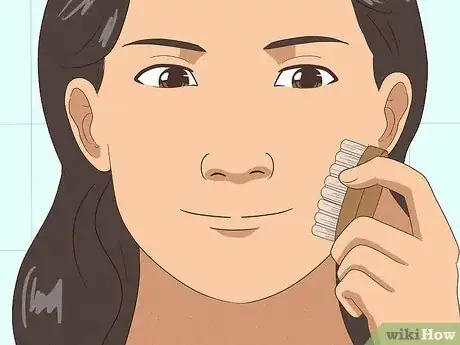
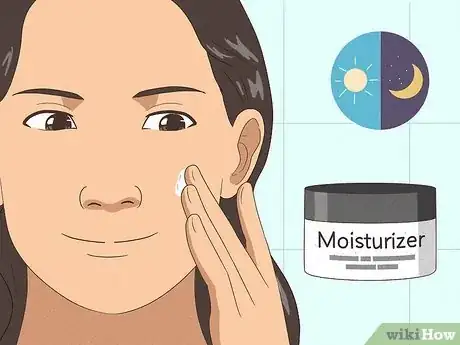
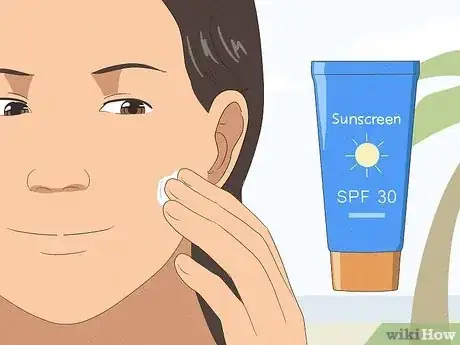

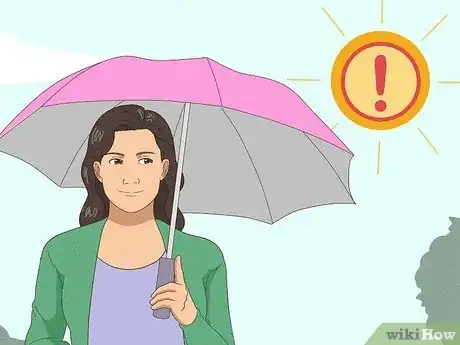
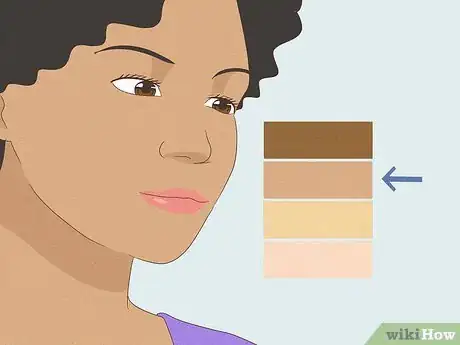
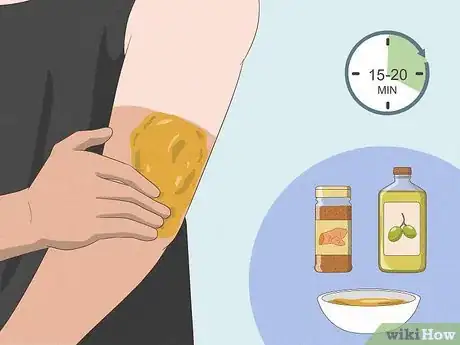
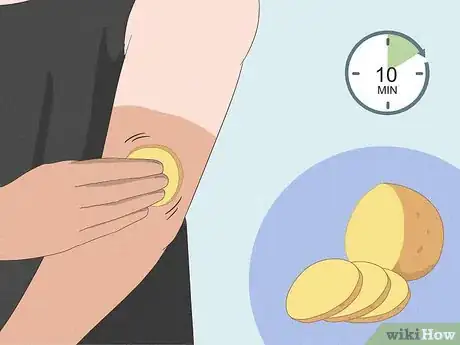
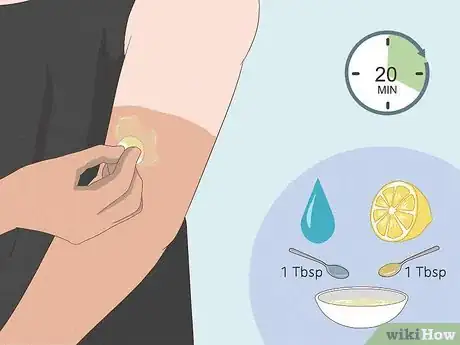
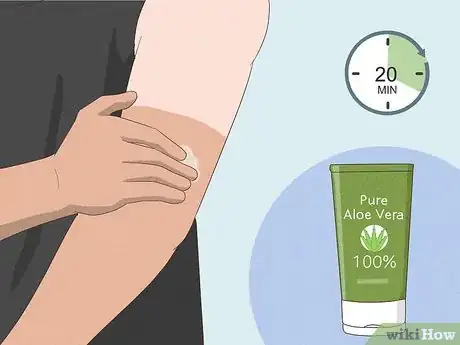
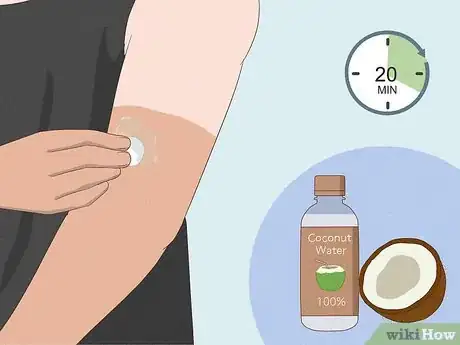
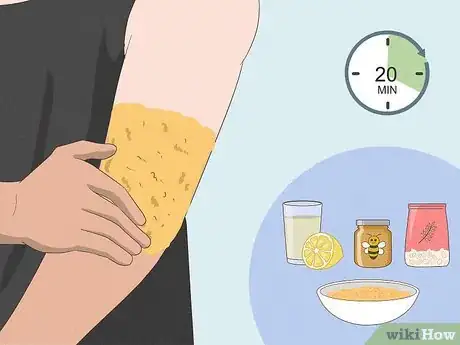
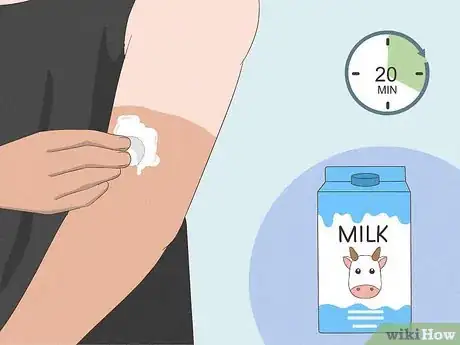
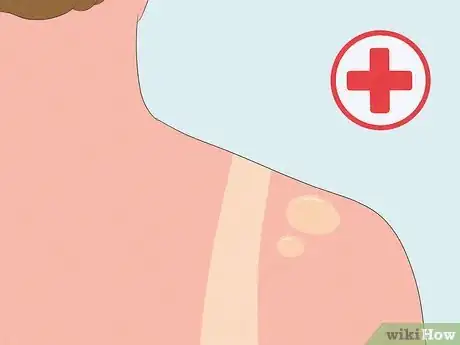

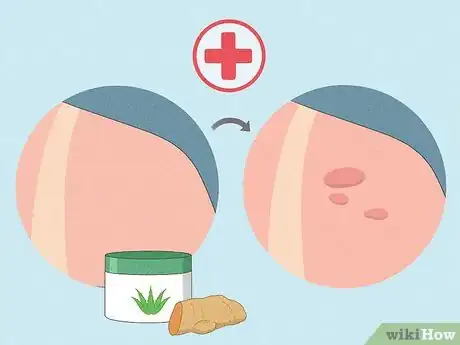
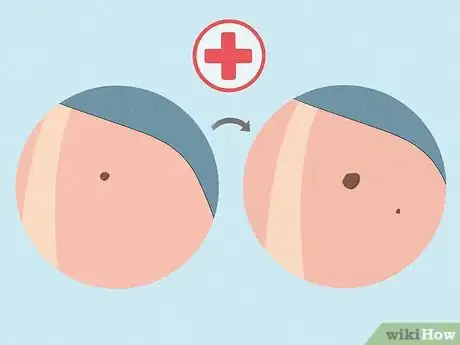

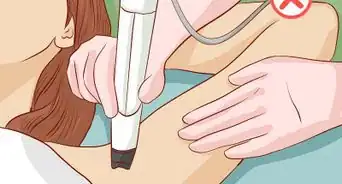

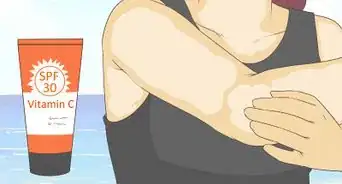

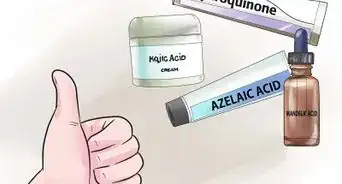



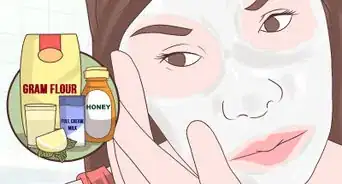
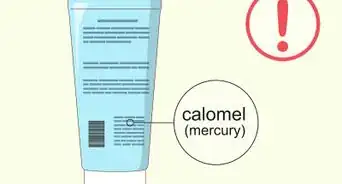










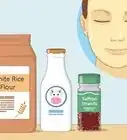

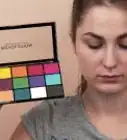




































Medical Disclaimer
The content of this article is not intended to be a substitute for professional medical advice, examination, diagnosis, or treatment. You should always contact your doctor or other qualified healthcare professional before starting, changing, or stopping any kind of health treatment.
Read More...